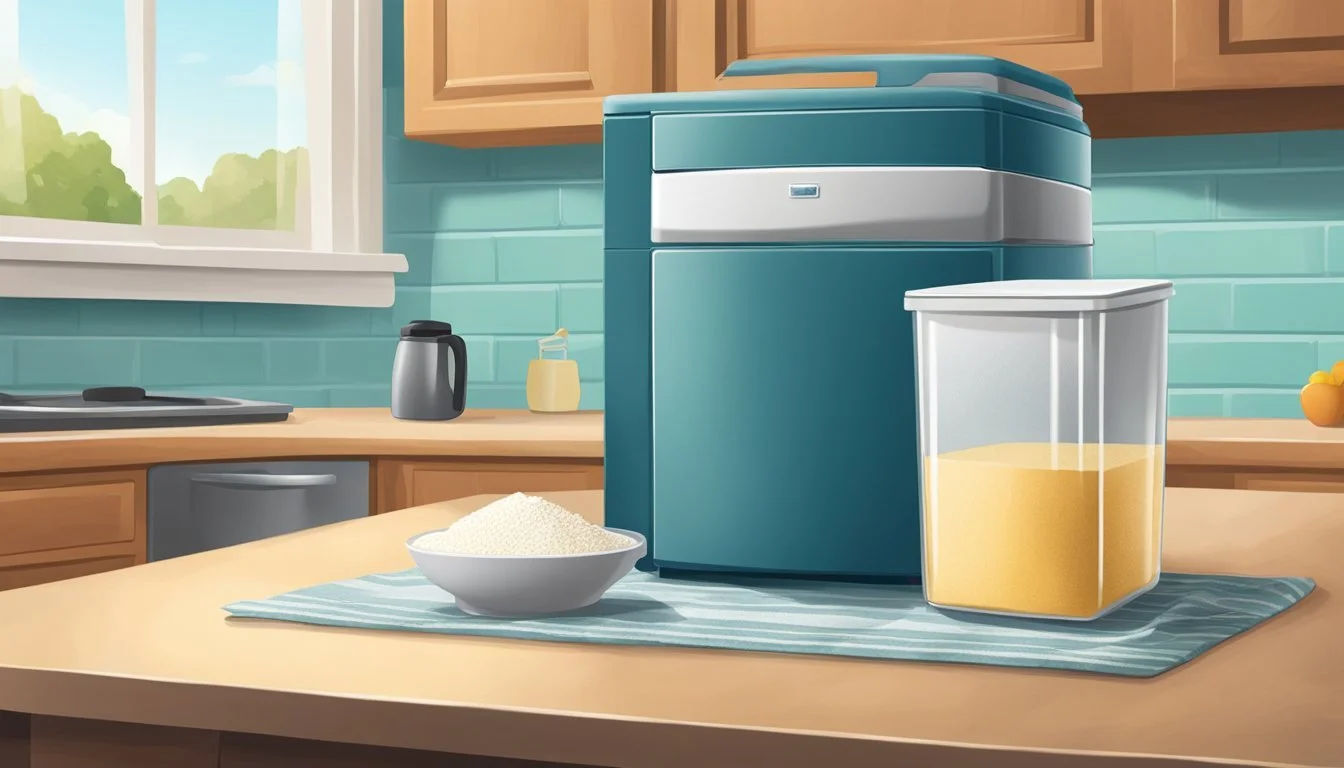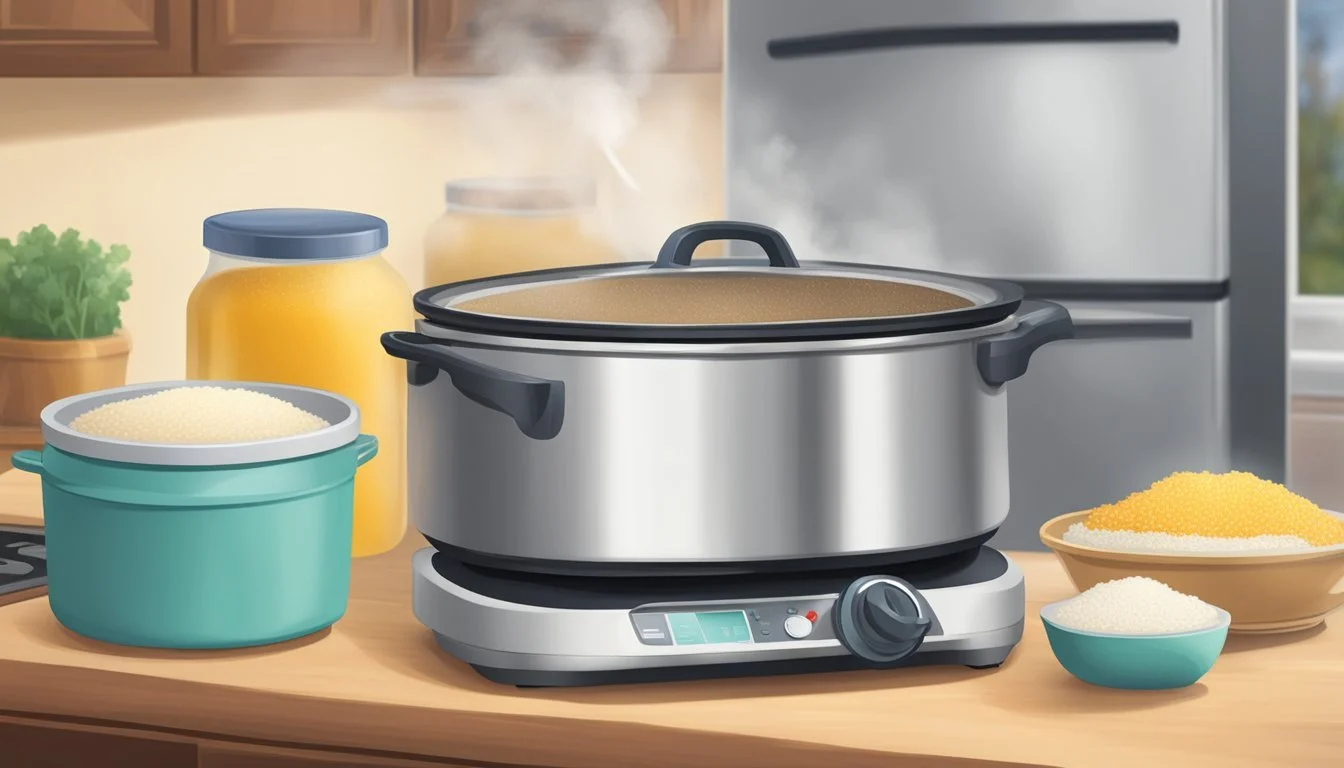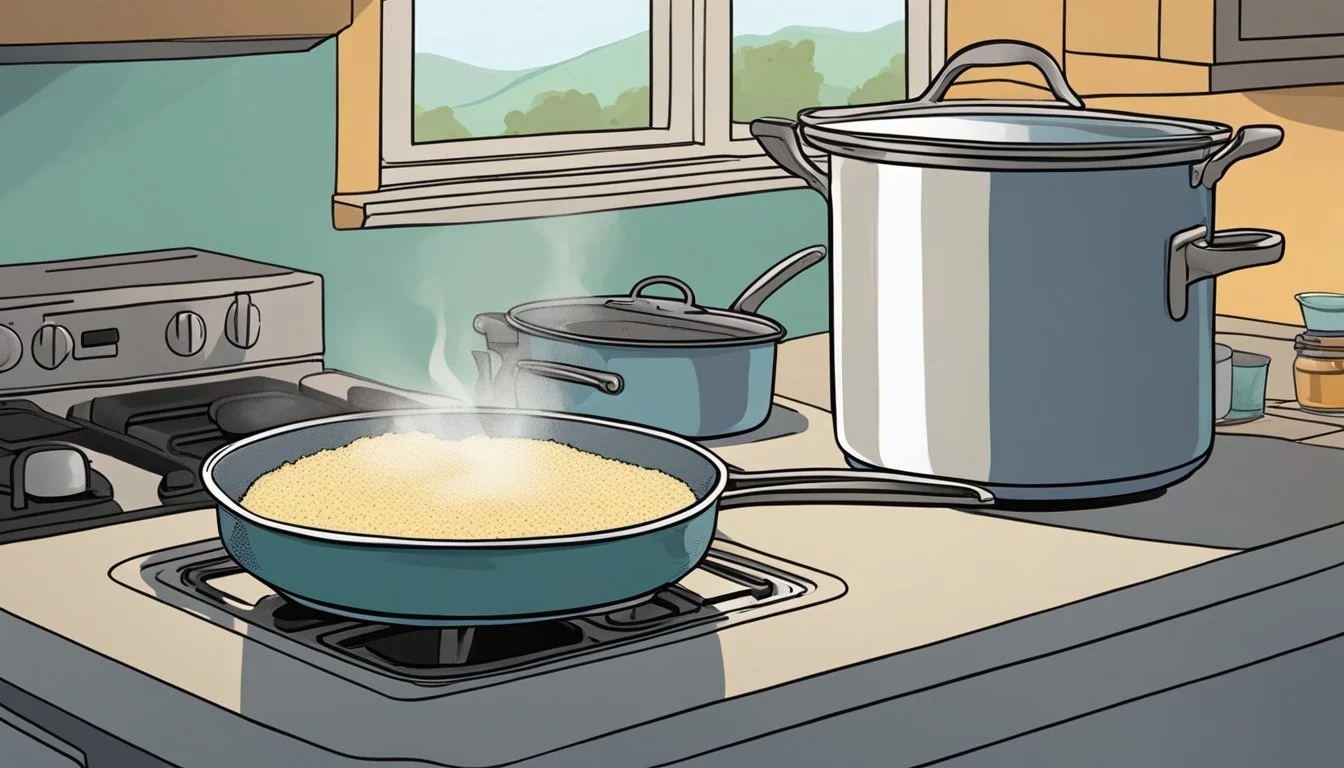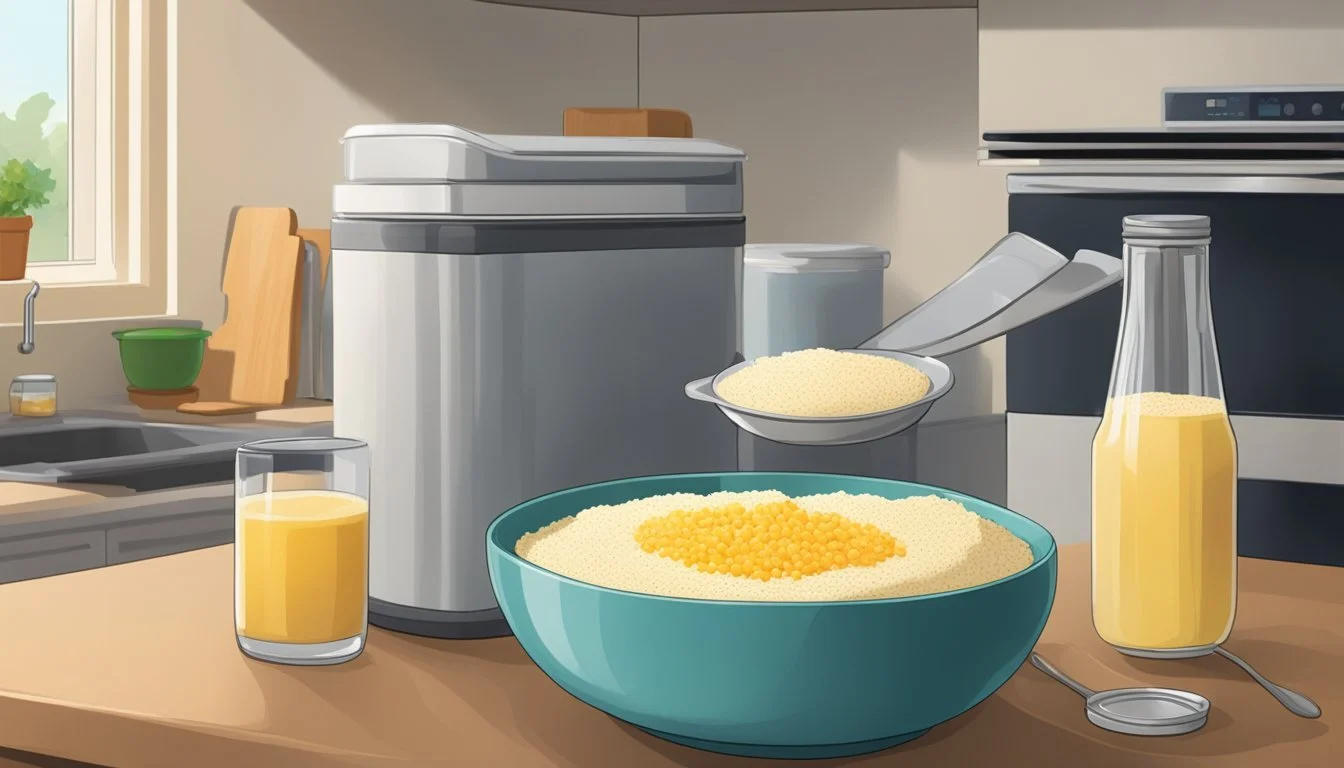Do I Have to Refrigerate Grits?
Understanding Proper Storage Practices
Grits, a Southern culinary staple made from ground corn, raise a common question: do they need to be refrigerated? The answer largely depends on the state of the grits—whether they're dry or cooked. Dry, uncooked grits, much like other dry grain products, should be stored in a cool, dry place and can be kept at room temperature; they do not need refrigeration.
Once cooked, however, grits are like any other perishable food and should be refrigerated. The moist, warm environment of cooked grits can be a potential breeding ground for bacteria if left out at room temperature for too long. To ensure the safety and quality of leftover cooked grits, they should be placed in the refrigerator within two hours of cooking.
Storing cooked grits properly in an airtight container can extend their shelf life and maintain their flavor. The refrigeration of cooked grits is a simple yet important step in food preservation, safeguarding the food from spoilage and ensuring it remains safe to eat when reheated.
Understanding Grits
Grits are a versatile and nourishing food with deep roots in Southern cuisine, known for their various types and role as a staple comfort food that can be enriched with nutritional additions.
Types of Grits
There are several varieties of grits, each with unique characteristics. Stone-ground grits are made from whole dried corn kernels, including the hull and germ, providing a more robust flavor and texture. Hominy grits result from a process in which corn is soaked in a solution to remove the hull and are then ground. This type can be white or yellow, depending on the corn used. Quick and instant grits are more processed, which allows them to cook faster but can sacrifice flavor and nutrition. Unlike polenta or cornmeal, which have different granulation and preparation methods, grits offer a unique texture and are a staple in many dishes.
Grits as a Southern Staple
Grits hold a special place in Southern cuisine, regarded as a comfort food that carries cultural significance. They are commonly served for breakfast, but also feature prominently in lunch and dinner dishes throughout the Southern United States. As a versatile element, grits can be found on home tables and in upscale restaurants alike, where they might be served plain, or embellished with cheese, spices, or other flavorful additions.
Nutritional Profile of Grits
Grits can offer nutritional value, particularly when made from whole corn. They contain essential minerals such as iron and calcium and are often enriched with B vitamins. While grits made from refined corn are less nutrient-dense, they still provide energy predominantly in the form of carbohydrates. The nutritional content can also be boosted by incorporating additional ingredients like cheese or vegetables. It's worth noting that grits are naturally gluten-free, accommodating those with gluten sensitivities.
Storing Grits
Proper storage of grits is crucial for maintaining their quality and extending their shelf life, whether they're uncooked or cooked. The right storage method can vary significantly between uncooked and cooked grits.
Uncooked Grits Storage
Uncooked grits can remain stable for a long period when kept in a cool, dry place away from direct sunlight. Stone-ground grits should be stored in an airtight container to preserve their flavor and freshness, typically lasting up to a year. Instant grits boast a longer shelf life, staying fresh for 2-5 years post the best-by date, provided they are sealed and unopened. For bulk storage, particularly for long-term needs, one can use Mylar bags with oxygen absorbers to considerably extend their shelf life, potentially up to 30 years.
Refrigeration of Cooked Grits
Once grits have been cooked, they should be promptly refrigerated if not eaten immediately. Cooked grits can be safely stored in the refrigerator for 3-5 days when placed in an airtight container to prevent moisture loss and contamination. It's advisable to let the grits cool before refrigeration and to portion them into single servings for convenience.
Freezing Grits
Freezing is an effective way to extend the life of leftover cooked grits even further. They should be divided into desired portions and sealed in freezer-safe containers or heavy-duty freezer bags, with any excess air removed to prevent freezer burn. When properly stored, cooked grits can be frozen for several months, ensuring that their texture and flavor are preserved as much as possible.
Preparing Grits
Grits are a versatile Southern dish that can be enjoyed savory or sweet. The key to delicious grits lies in proper cooking techniques and the incorporation of flavorful ingredients.
Cooking Methods
Stove Top: To prepare grits on the stove, one typically brings water, milk, or broth to a boil in a saucepan. Grits are then whisked in slowly, and the heat is lowered to a simmer. This method requires frequent stirring to prevent clumping and achieve a creamy consistency. Cooking time may vary, usually taking about 20 to 25 minutes for stone-ground varieties.
Microwave: Grits can also be cooked in the microwave, which is a quicker option. One should combine grits with water, milk, or broth in a microwave-safe bowl. Cooking should be done on medium heat at 30-second intervals, stirring in between until the grits are fully cooked and have reached the desired creaminess.
Ingredients for Flavor
Liquids:
Water creates a neutral base and is often used for both cooking and reheating grits.
Milk or heavy cream contributes to a richer, creamier texture.
Broth offers an enhanced savory flavor, suitable for cheesy or spicy grits.
Add-Ins:
Butter is a staple in grits for a smooth and rich finish.
Cheese transforms plain grits into cheesy grits, with cheddar being a popular choice for its bold flavor.
For added texture and taste, one might include crispy bacon or sausage.
A pinch of salt is essential to highlight the grits' natural flavor.
The options for customization are vast, allowing for a range of flavors from savory breakfast bowls with bacon or sausage to decadent dishes with butter, cream, and cheese.
Achieving Perfect Texture
Maintaining the ideal texture in grits is crucial. A balance between liquid ratios and technique ensures a creamy and smooth consistency, devoid of unwanted lumps.
Liquid Ratios
Grits absorb liquid as they cook, which is fundamental to reaching the desired creamy texture. The standard ratio is 1 part grits to 4 parts liquid. This liquid can be water, milk, or a combination with broth for added flavor. To revive the texture of leftover grits, consider adding a tablespoon of liquid at a time. Heat gently and stir to integrate the extra liquid evenly. Here's a guide to begin with:
Amount of Grits Water Milk Broth 1 cup 3 cups 1 cup Optional 1/2 cup 1.5 cups 1/2 cup Optional
Preventing Lumps
To prevent lumps, one should stir the grits regularly during the initial stage of cooking. Utilizing a whisk can be effective in breaking up small lumps that form. Once the initial ratio of liquid is absorbed and the grits have begun to thicken, adding more liquid might be necessary. Add warm liquid, whether it's water, milk, or broth, to make sure the grits remain at a consistent temperature and to achieve a smooth and creamy texture.
Reheating Grits
Reheating grits properly can ensure they retain their creamy texture and flavor. It's important to add liquid and use moderate heat to avoid drying out or burning the grits.
Microwave Reheating
To reheat grits in the microwave, place them in a microwave-safe bowl, then stir in a little water, milk, or broth to loosen them up. Heat on a medium setting in 30-second intervals, stirring after each interval to promote even warming and prevent hot spots. Continue until the grits have reached the preferred temperature and consistency.
Stovetop Reheating
Reheating grits on the stovetop involves adding the grits to a pot along with a splash of liquid such as water, milk, or broth. Heat the mixture over low to medium heat, stirring frequently to prevent sticking and to ensure even heat distribution. Add more liquid as necessary until the desired warmth and creaminess are achieved.
Oven Reheating
To reheat grits in the oven, preheat the oven to 350°F (175°C). Place the grits in an oven-safe dish and fold in a few tablespoons of milk, water, or stock to remoisten them. Cover the dish with foil to keep the moisture in, and heat for about 10 minutes. Stir, then add additional liquid if needed, and continue heating until thoroughly warmed through.
Creative Grits Dishes and Variations
Grits, a staple of Southern cuisine, are surprisingly versatile and can be transformed into innovative dishes for breakfast, lunch, or dinner. Adapting grits into different formats such as cakes or waffles can give a classic dish an exciting twist, while different flavor combinations can elevate the humble grits to new culinary heights.
Grit Cakes and Waffles
Grit cakes are a delightful evolution of traditional creamy grits. Once cooled, the grits are shaped into patties and pan-fried until they have a crispy exterior. They serve as a wonderful side dish or base for toppings such as a rich tomato sauce or sautéed mushrooms. For breakfast, one can repurpose grits into waffles, combining them with typical waffle batter ingredients and cooking them in a waffle iron until golden brown. These waffles could be a unique replacement for the normal bread in a savory sandwich or topped with syrup for a sweet option.
Shrimp and Grits
Shrimp and Grits is a quintessential Southern dish that marries seafood with the heartiness of grits. A casserole dish can be used to bake a layer of cheesy grits and top with sautéed shrimp mixed with spices, bacon, and peppers. As a classic dish, it can be served as either the main course for lunch and dinner, or, when made with simpler ingredients, as a fulfilling breakfast option.
Additional Cooking Tips
When it comes to grits, the versatility and enhancement potential can take the classic breakfast cereal beyond its traditional roots. From creative uses of leftovers to boosting flavor and creaminess with add-ins, there's a range of possibilities for elevating standard grits.
Using Leftover Grits
Leftover grits should not go to waste – they offer a canvas for creativity and can be repurposed effectively. One can store leftover grits in the refrigerator, and they will maintain their quality for a few days. Simply spread the cooled grits into a thin layer on a flat dish, cover, and refrigerate. When ready to use, slice the chilled grits into squares and pan-fry in butter until golden brown. This technique not only gives them a crisp texture on the outside but also warms them through, resulting in a comforting and satisfying dish.
Enhancing Grits with Add-Ins
The addition of thoughtful ingredients can transform the texture and taste of grits, making them richer and more flavorful. Consider stirring in butter or cream to create a creamy texture, or add shredded cheese for a decadent twist. For those looking to enrich the nutritional profile, stirring in iron-rich greens or cooking the grits in a nutrient-dense broth can be beneficial. Transforming grits into a dish akin to polenta by including herbs, garlic, or sun-dried tomatoes can also make them an alluring side dish for any meal. Grits are a highly customizable breakfast food, and with the right add-ins, they can be adapted to suit any palate.








